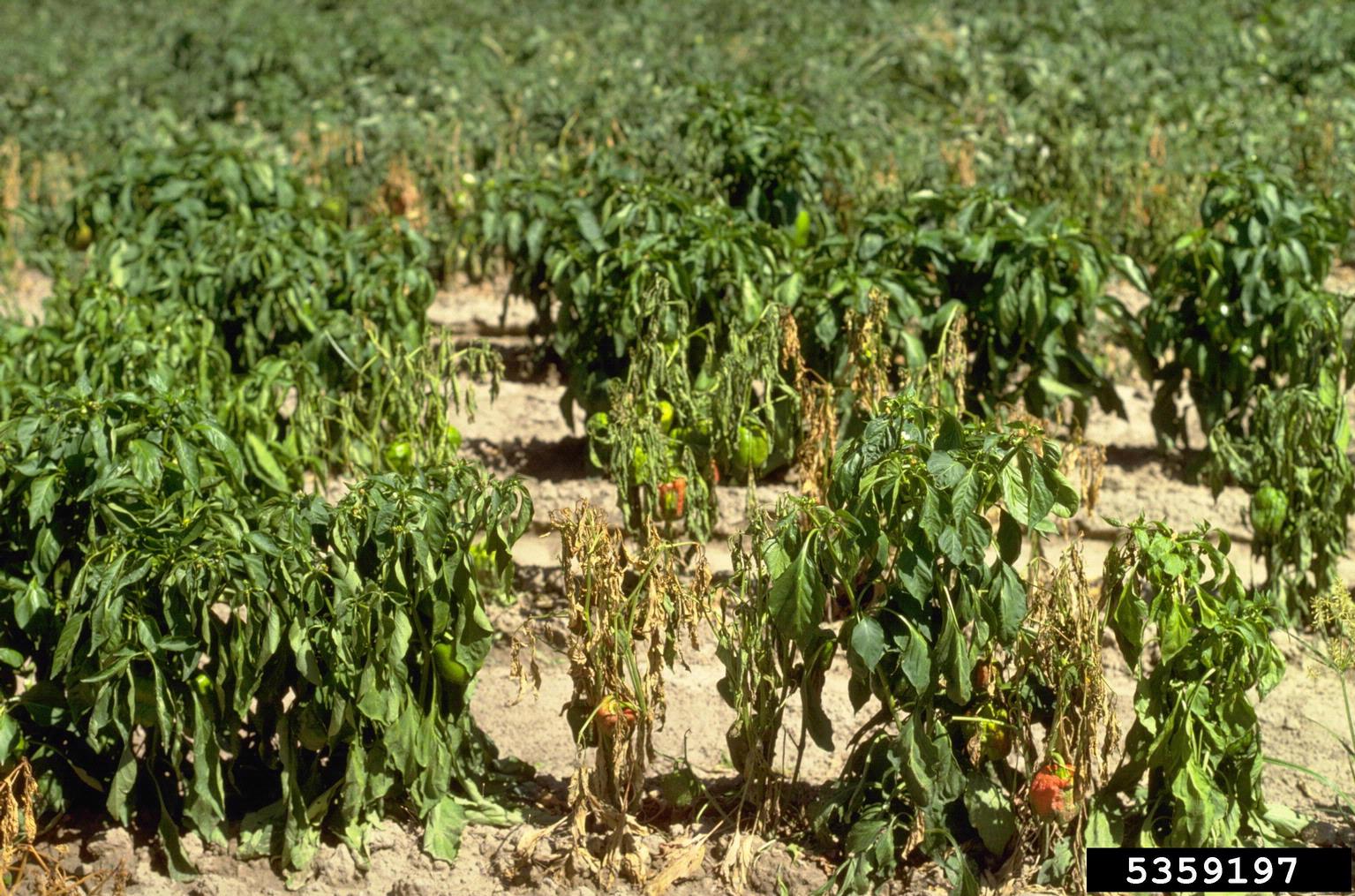Pepper Plant Blight: Information For Controlling Phytophthora On Peppers


The soil is full of living things; some useful, like earthworms, and others not as useful, like the fungi in the genus Phytophthora. These irksome pathogens can last long after infected plants have composted into nothing, continuing to attack plants at all stages of development. Knowing the signs of phytophthora pepper blight will help you head off disaster if this fungus appears in your garden.
Phytophthora Symptoms on Pepper Plants
Pepper plant blight manifests in many different ways, depending on what part of the plant is infected and at what stage of growth the infection set in. Many times, seedlings infected with phytophthora die shortly after emergence, but older plants usually continue to grow, developing a dark brown lesion near the soil line. As the lesion spreads, the stem is slowly girdled, causing sudden, unexplained wilting and the eventual death of the plant - root symptoms are similar but lack the visible lesions. If phytophthora spreads to the leaves of your pepper, dark green, circular or irregular lesions may form on the tissue. These areas quickly dry to a light tan color. Fruit lesions begin similarly, but blacken and shrivel instead.
Controlling Phytophthora on Peppers
Phytophthora blight in peppers is common in wet areas when soil temperatures are between 75 and 85 F. (23-29 C.); ideal conditions for rapid multiplication of the fungal bodies. Once your plant has phytophthora pepper blight, there's no way to cure it, so prevention is key. In beds where phytophthora has been a problem, crop rotation with brassicas or grains on a four-year rotation can starve the fungal bodies out. In a new bed, or after your crop rotation is complete, increase drainage by amending the soil heavily with compost, using as much as 4 inches (10 cm.) on a 12 inch (30.5 cm.) deep bed. Planting peppers on 8 to 10-inch (20.5 to 25.5 cm.) tall mounds can further help to prevent the development of phytophthora. Waiting to water until the soil 2 inches (5 cm.) below the surface feels dry to the touch will prevent overwatering and deny phytophthora the conditions it needs to survive.
Gardening tips, videos, info and more delivered right to your inbox!
Sign up for the Gardening Know How newsletter today and receive a free copy of our e-book "How to Grow Delicious Tomatoes".

Kristi Waterworth was a regular contributor to Gardening Know How for many years, answering countless queries on plant pests and diseases.
-
 Get Ready For A Summer Of Hummers! Grow These Full Sun Hummingbird Plants and Flowers
Get Ready For A Summer Of Hummers! Grow These Full Sun Hummingbird Plants and FlowersIf you’re lucky enough to enjoy a sunny backyard, make sure you are maxing out on your pollinator opportunities and grow these full sun hummingbird plants and flowers
By Tonya Barnett
-
 12 Lush Alternatives To A Lawn For Sustainable Spaces
12 Lush Alternatives To A Lawn For Sustainable SpacesAlternatives to a lawn are beautiful and also beneficial to your local ecosystem and its pollinators. Explore our top picks for plants to replace grass.
By Tonya Barnett